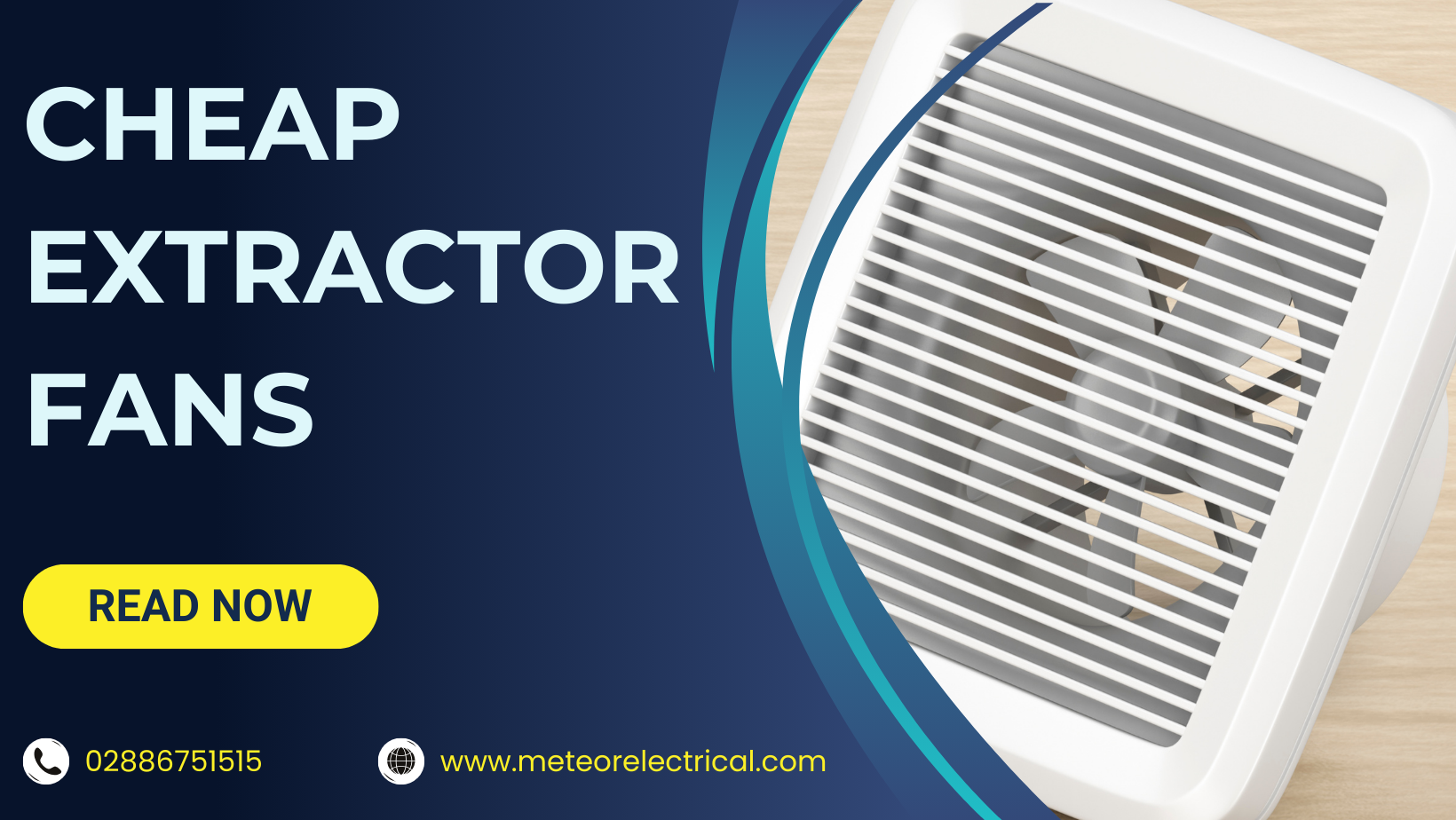Cheap Extractor Fans

Extractor fans are an essential tool for managing the air quality in any indoor space, ensuring that moisture, smoke, and unpleasant odours are kept at bay. Whether you're looking to keep your bathroom free of excess humidity or ensure that your kitchen remains smoke-free during cooking, extractor fans are a necessity. Their use in commercial spaces, from restaurants to warehouses, also proves invaluable in maintaining a hospitable and functional environment.
But what about the cost? While some extractor fans can be expensive, many affordable models perform just as well without breaking the bank. In this blog, we’ll explore what extractor fans are, their types, how economical they are to run, and how to choose the best one for your needs—while keeping an eye on budget-friendly options. Ready to freshen up your space? Let’s dive in!
For more insights into energy-efficient home upgrades, check out Energy Saving Trust, and for ventilation regulations, explore the UK Government’s Building Regulations.
What Are Extractor Fans?
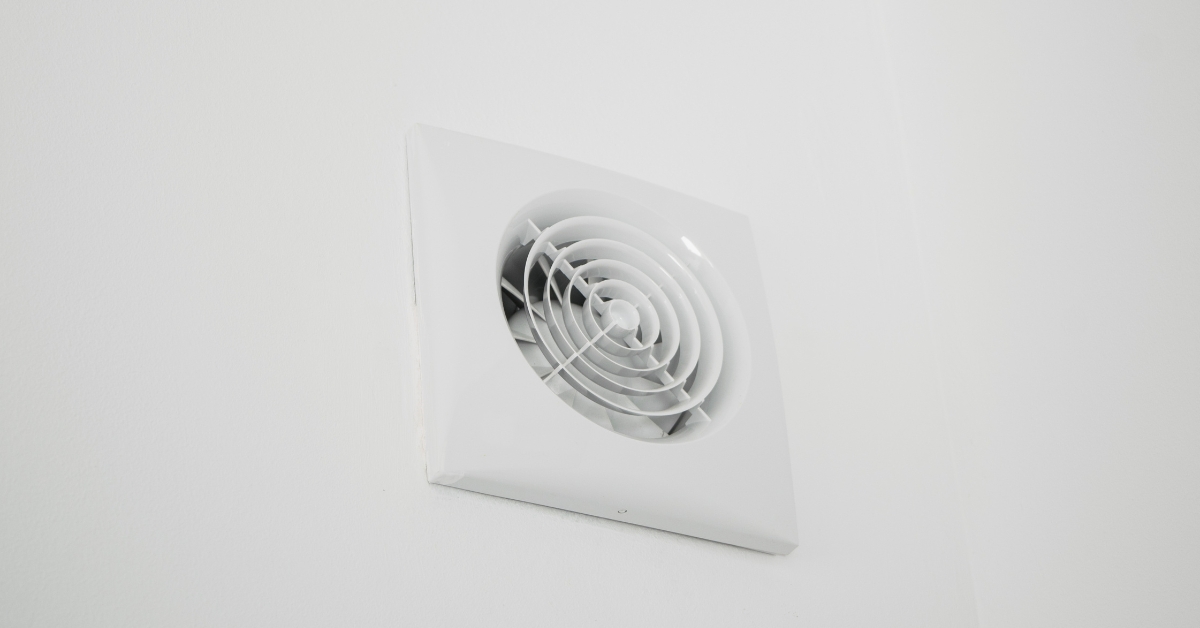
An extractor fan is a type of ventilation fan designed to remove unwanted air, moisture, smoke, or odours from a room, ensuring a healthier, more comfortable environment. These fans are commonly found in kitchens, bathrooms, and laundry rooms, where excess moisture and smoke can build up and cause issues like damp, mould, or lingering smells.
Extractor fans are typically powered by electricity and come in different sizes and capacities depending on their intended use. In addition to residential settings, they are often employed in commercial spaces such as restaurants, offices, and industrial environments to maintain air quality. There are three main types of extractor fans:
- Axial Extractor Fans: These fans are usually installed in walls and are ideal for moving air short distances. They're commonly found in bathrooms or smaller kitchens and are known for their compact size and relatively quiet operation. Their main role is to extract moist or stale air and expel it outside the building.
- Centrifugal Extractor Fans: These are more powerful and are typically used in spaces where air needs to be moved over longer distances. Due to their higher extraction rate, they are noisier than axial fans but provide excellent ventilation for larger spaces such as commercial kitchens or utility rooms.
- Inline Extractor Fans: Installed in the ceiling or roof, inline fans are perfect for bathrooms or kitchens that do not have direct access to an external wall. These fans run quietly and are highly efficient in areas where noise might be an issue, like bedrooms or study spaces.
Each type of fan has its own advantages depending on the layout and requirements of your space. You can explore a wide range of extractor fans at Meteor Electrical, where you’ll find both budget-friendly and premium options.
Credit: Georgina Bisby DIY
Are Extractor Fans Economical to Run?
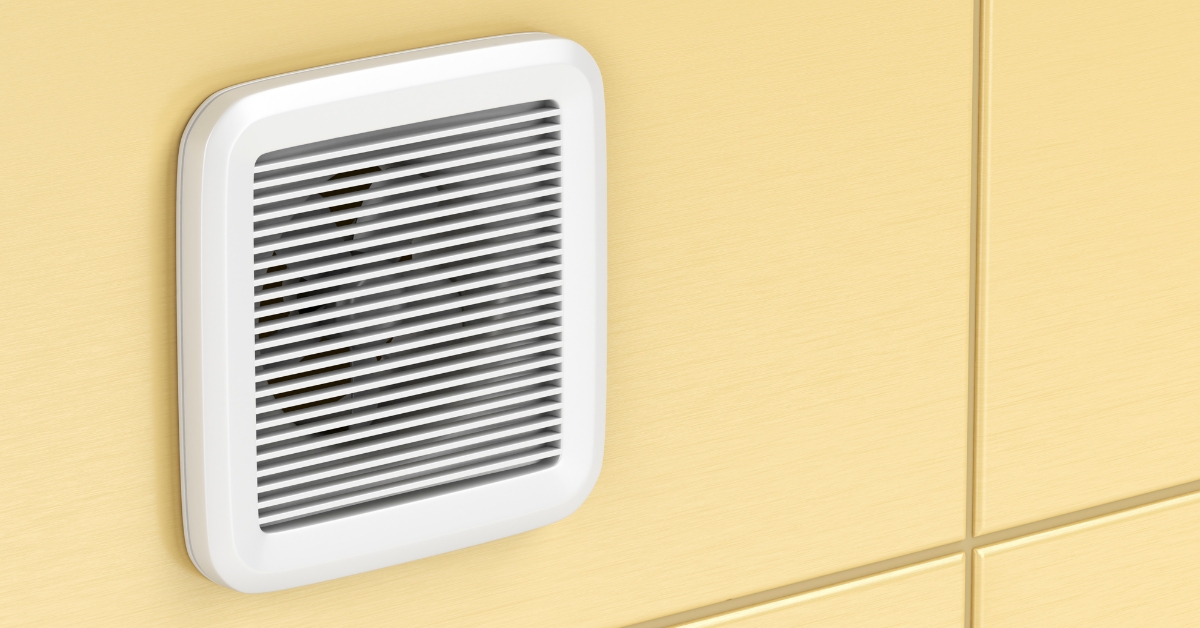
One of the main concerns when it comes to choosing an extractor fan is energy consumption. Thankfully, most modern extractor fans are incredibly energy-efficient. Depending on the brand and model, these fans typically consume between 5 to 36 watts of power. Even the most powerful models rarely exceed 40 watts, meaning they won’t cause a significant spike in your electricity bills.
Here’s a general breakdown of power consumption:
- Axial Extractor Fans: These smaller fans tend to consume the least amount of energy, usually around 5 to 20 watts, making them a cost-effective option for small spaces.
- Centrifugal Extractor Fans: Larger and more powerful, these fans consume more energy but are still economical, using around 25 to 40 watts.
- Inline Extractor Fans: Inline fans sit between axial and centrifugal fans in terms of power usage, typically consuming around 15 to 30 watts.
The running cost of your extractor fan depends on its wattage and how long you run it. For a fan that uses 20 watts and runs for two hours a day, the daily electricity cost would be minimal. To get a clearer idea of your energy costs, simply divide the fan's wattage by 1,000 to convert it into kilowatt-hours (kWh). Multiply this by your electricity rate, and you’ll have a rough estimate of its daily operating cost.
If you’re interested in learning more about energy-efficient fans, check out Which?.
Factors That Affect Your Fan’s Energy Consumption
Several factors can influence the energy consumption of your extractor fan, including:
- Fan Size: Larger fans typically use more energy but provide better ventilation, especially for bigger rooms.
- Fan Speed: Running a fan at a higher speed consumes more energy. Many fans come with variable speed settings, allowing you to adjust according to your needs.
- Room Size: Larger rooms require more ventilation, which can increase the time your fan needs to run, thus consuming more energy.
- Duration of Use: The longer you run your fan, the more energy it consumes. It’s recommended to run bathroom fans for 15-20 minutes after showering to clear out moisture effectively.
By selecting the right fan and using it efficiently, you can enjoy improved air quality without drastically increasing your energy bills.
How To Keep Costs Low?

Although extractor fans are generally economical to run, their costs can add up over time, especially if they are used continuously. Here are some tips to help keep your energy bills low while maintaining efficient ventilation:
- Adjust the Speed: Lower fan speeds require less energy, so only use high speeds when necessary.
- Use a Timer: Set your fan to run for a limited time, such as 15-30 minutes, after a shower or when cooking. This ensures the fan doesn't run for longer than necessary.
- Consider Passive Ventilation: Some fans operate passively, meaning they don’t use any electricity at all. However, these systems might not be as effective in highly humid or smoke-filled areas.
- Opt for Energy-Efficient Models: When choosing an extractor fan, look for models with high energy efficiency ratings. These will save you more on your energy bills in the long run.
For more details on energy-saving tips, visit Energy Saving Trust.
Credit: Endpoint101
What Are the Three Types of Extractor Fans?
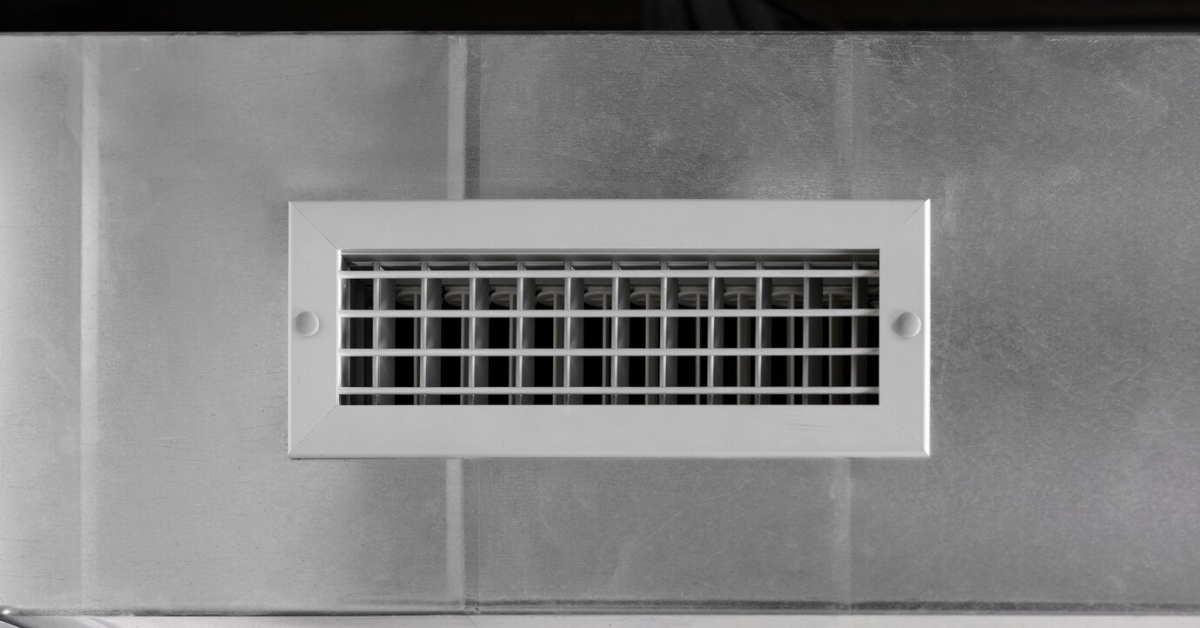
There are three main types of extractor fans, each designed for different settings and requirements.
- Axial Extractor Fans: Designed for smaller spaces like bathrooms and toilets, axial fans work by drawing air horizontally. They are ideal for short-distance air movement, and their compact design makes them easy to install in walls or windows. If you’re looking for a budget-friendly option for a small space, axial fans are a great choice.
- Centrifugal Extractor Fans: For larger rooms or those without access to an external wall, centrifugal fans are a better choice. They can move air over longer distances, making them more suited for utility rooms, larger bathrooms, or commercial kitchens. Their powerful motors allow for a higher extraction rate, although they tend to be louder than axial fans.
- Inline Extractor Fans: These fans are installed in ceilings or loft spaces and are perfect for spaces that need quieter operation. Inline fans are particularly useful for bathrooms or kitchens where noise levels need to be kept low. If noise is a concern, consider this type of fan, which offers efficient ventilation with minimal disruption.
How To Choose the Best Extractor Fan?
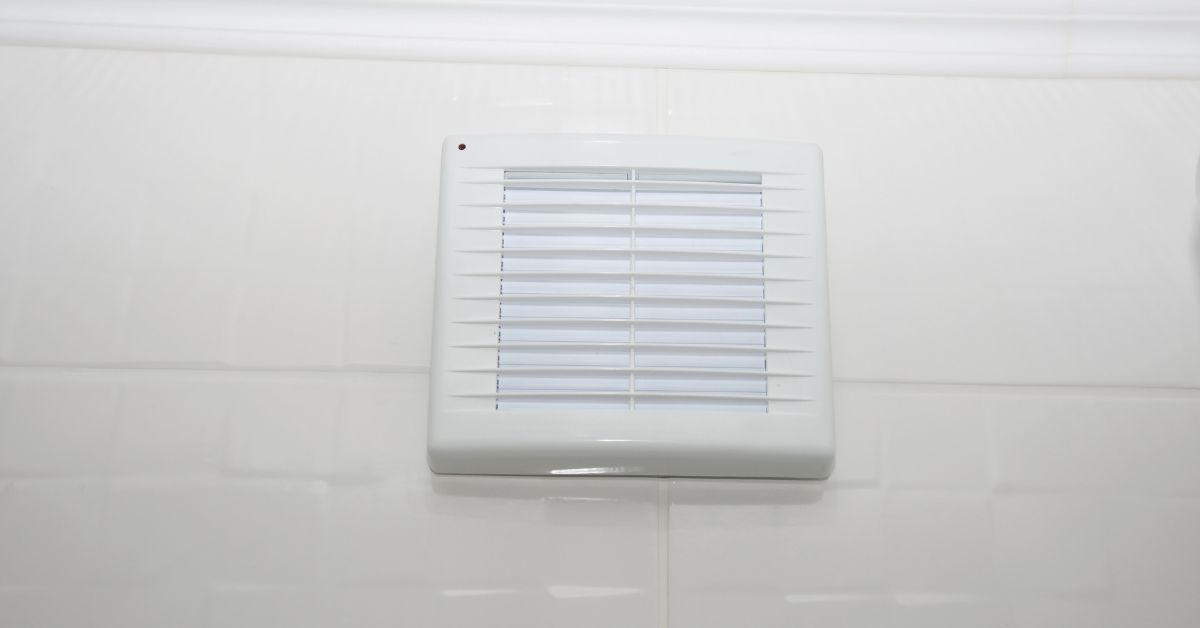
When choosing an extractor fan, there are several factors you need to consider to ensure you’re getting the right product for your space:
- Airflow Rate: This measures how much air the fan can move and is typically measured in litres per second (L/s) or cubic metres per hour (m³/h). For bathrooms, a minimum airflow rate of 15L/s is recommended. If your bathroom or kitchen is larger or used frequently, you may want a fan with a higher extraction rate.
- Noise Levels: If you’re installing the fan in a living area or bedroom, look for a model with a low noise level. Extractor fans with noise ratings under 30 decibels (dB) are considered quiet. Always check the decibel rating if noise is a concern.
- Energy Efficiency: Some models are designed to use less energy while still providing excellent ventilation. Look for fans that have energy efficiency ratings or those that are Energy Star-certified.
- Heat Recovery Option: Some advanced extractor fans come with a heat recovery option, which recycles the heat from stale air before expelling it. This is particularly useful in cold climates where energy efficiency is a priority.
| Extractor Fan Type | Best For | Noise Level | Energy Consumption (W) | Cost Range |
|---|---|---|---|---|
| Axial | Small rooms with direct external wall access | Low | 5-20W | £15 - £50 |
| Centrifugal | Larger rooms or rooms without external walls | High | 25-40W | £30 - £100 |
| Inline | Spaces where noise is a concern or with long ducting | Very Low | 15-30W | £40 - £120 |
What Are The Best Cheap Extractor Fans?
With so many options to choose from, it can be difficult to narrow down the right extractor fan for you. If you’re looking for high-quality extractor fans, visit Meteor Electrical.
Meteor carries a wide range of extractor products that keep your home humidity-free without taking up too much electricity. These systems are also economical, so you can keep them running without worrying about energy costs. Here are some of the best extractor fans Meteor has to offer.
Xpelair Single Speed Extractor
The most economical option for extractor fans is this Xpelair Single Speed model. This extractor fan boasts a wattage of 12W which means you don’t have to spend too much on energy costs.
Despite the lower energy consumption, you can expect an extraction rate of 21L/s with this fan. This Xpelair model is compact, making it ideal for bathrooms, kitchens, utility rooms, etc.
Xpelair Simply Silent Extractor Fan
One of the best options at Meteor includes the Xpelair Simply Silent Extractor Fan. This powerful extractor device features an over-run timer for better operation and is also compatible with a sensor device. You can toggle the timer between seconds to 30 minutes.
The Xpelair fan is highly efficient and uses Ghost Air Movement technology for silent running. This is an excellent option for almost any bathroom as it works at an exchange rate of 15L/s or 21L/s. This device allows you to enjoy powerful air circulation with excess energy charges.
iCon Eco Extractor Fan
This incredible extractor fan is stylish and functional, making it ideal for many installations. Despite the compact size, the iCon Eco fans deliver powerful extraction qualities that work well for bathroom and shower rooms.
With an air extraction rate of 18 litres per second, this fan creates a hospitable environment in your bathroom.
Conclusion
Extractor fans are an affordable and efficient solution to keeping your home or commercial space fresh and comfortable. Whether you're choosing an axial fan for a small bathroom or a centrifugal fan for a busy kitchen, there are plenty of budget-friendly options available. By selecting the right model and using it efficiently, you can enjoy the benefits of clean, ventilated air without a high energy cost. For a wide range of cost-effective extractor fans, be sure to check out Meteor Electrical.
FAQs
1. Are cheap extractor fans as efficient as expensive ones?
Yes, many affordable extractor fans offer excellent performance. The key is to choose a fan that suits your space's ventilation needs. Look for energy-efficient models with good airflow ratings.
2. What is the difference between axial and centrifugal extractor fans?
Axial fans are designed for short-distance airflow, making them ideal for small rooms like bathrooms. Centrifugal fans move air over longer distances and are better suited for larger spaces or rooms without an external wall.
3. Can a cheap extractor fan help reduce moisture in the bathroom?
Absolutely! Even budget-friendly extractor fans are effective at removing excess moisture from bathrooms, which helps prevent mould and damp issues.
4. How much electricity does a typical extractor fan use?
Most extractor fans use between 5 to 36 watts of power, with even the most powerful models rarely exceeding 40 watts. This makes them economical to run.
5. How long should I run my extractor fan after a shower?
It’s recommended to run your extractor fan for 15-20 minutes after a shower to effectively remove moisture and prevent condensation buildup.

